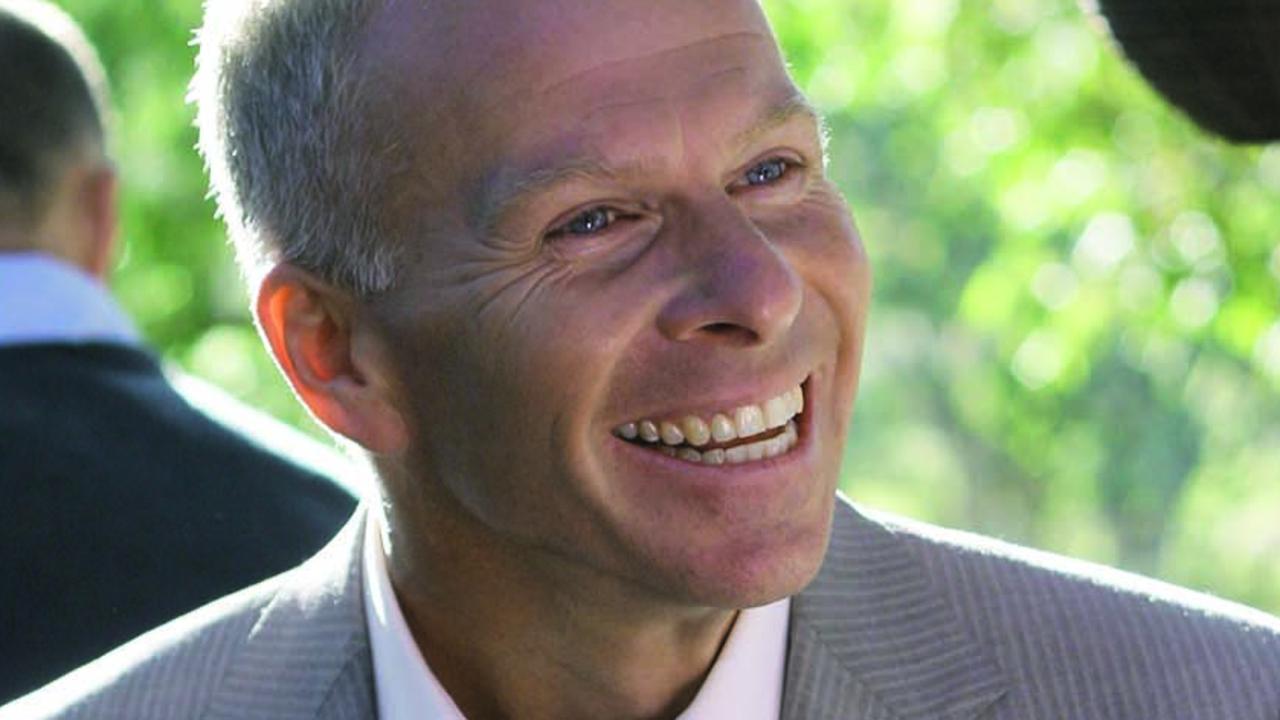REPORTS of lead poisoning in Mount Isa reveal an astounding lack of action on all sides.
THE apparent culture of indifference is at first shocking.
When parents in the central Queensland mining city of Mount Isa were confronted with test results showing their young children were suffering lead poisoning, many did nothing.
It is hard to believe. But it is there in the statistics of Queensland Health, which has been offering free blood screening for Mount Isa children aged between one and four since 2006.
The first of the surveys - released in 2008 - found 11 per cent of Mount Isa's children had lead poisoning. Of 57 children found to have blood-lead levels above the safety limit set by the World Health Organisation, 27 have never returned for further testing or medical help, despite "numerous attempts" by authorities to warn the parents of the risks their children faced from the exposure.
And the dangers are real. For years scientific studies have linked blood-lead levels of 10 micrograms per decilitre in developing children to behavioural and intellectual retardation - with estimates they reduce an IQ by at least seven points - as well as increasing the chances of a reduced life expectancy by 50 per cent.
All 57 of those young children - youngsters are the most vulnerable to the affects of lead - had levels of more than 10mcg/dL, with some recording three times the level.
More recently, evidence suggests neurocognitive injury can occur at 5mcg/dL, the average level found among more than 600 children tested in the city.
The mine operators and government have played down the health threat for years by arguing that in the past few decades no one in the city of more than 21,000 people has been found to be suffering acute symptoms of lead exposure. To trigger that sort of illness would need a blood-lead reading of 60mcg/dL, a level high enough to support the scandalous Queensland government claim made in 2008 that some children in the screening program must have been "swallowing [lead] fishing sinkers left around the house".
Instead, the damage to the young body from levels found in Mount Isa's children are subtle, lying dormant until they start struggling at school or, worse, when they develop one of the many related cancers later in life.
The insidious and delayed effects of lead exposure - just like asbestos - lend some insight as to why people in the city are seemingly complacent. Another explanation is denial in the face of the high wages and job security at the mine.
During several visits to Mount Isa in the past two years, The Weekend Australian has found it difficult to find residents who are openly concerned about the issue.
"I grew up in the Isa and there is nothing wrong with me" is a common refrain.
Luke Koski, 21, and his partner Jessica Wright, who have an 18-month toddler, Dion, are typical of this attitude. Originally from Bundaberg, Koski moved to Mount Isa last year for the "good money", working as a contract miner underground.
Koski and Wright were offered free lead testing for their only child in May but didn't take it up.
"We thought about it but we are only going to be here for about a year," he says, while he and Wright play with their son at a public water park opened last year across the road from the mine and its two stacks.
"To be honest, the workers have to get tested but I didn't think we really needed Dion tested because we are not going to live here much longer. We came here because of the work. We are going to leave in November because we want to be closer to family."
Wright says she doesn't know much about the exposure risks and is shocked when told of the damage that can be done to a child from exposure.
"I didn't think it harmed anyone. It is worrying," she says.
Without cold, hard evidence that children are being hurt, it is understandable why few residents want to take on the mine, the lifeblood of the city. More than 4000 people are directly employed at the operation, which produces the largest amount of lead emissions in Australia.
The hidden danger was brought into sharp focus this week with the release of expert medical reports on children found to have dangerously high lead levels in the 2008 blood screening. Lawyer Damian Scattini, of Slater & Gordon, who is representing five families suing Xstrata, the Queensland government and the local council, says the reports are the first scientific confirmation of the effect on children of lead pollution from the hardrock mine and smelters in Mount Isa.
The reports focused on two children - Sidney Body, 5, and Bethany Sanders, 4 - who recorded the worst lead poisoning. Sidney had a blood-lead level of 31.5mcg/dL - three times the international safety limit - while Bethany posted 27.4mcg/dL.
Theodore Lidsky, an adjunct professor of neuroscience at City University of New York and the co-author of 11 books on the effects of metals on the human body, found both children had brain damage and the only explanation was lead poisoning.
In the case of Bethany, who was first discovered to have lead poisoning at just 20 months, Lidsky said tests concluded she was "mentally retarded".
"The present evaluation of Bethany Sanders revealed a young girl with an overall level of intellectual functioning in the extremely low range and overall level of adaptive functioning in the low range," he said in his report.
"Taken together, a child with Bethany's IQ and level of adaptive functioning is considered to be mentally retarded.
"Consideration of [Bethany's] medical history identifies lead poisoning as the only neuro-developmental risk factor in her background."
Lidsky's report on Sidney came to similar conclusions.
"The present evaluation of Sidney Body revealed a young boy with an overall level of intellectual functioning in the borderline range and overall language functioning in the extremely low range," he said.
"Indeed, Sidney's blood-lead level was more than three times the threshold set by the WHO and more than six times the level now known to adversely affect neurocognitive development in children."
Xstrata's reaction to the reports this week has been to repeat its claim that the source of poisoning is unknown. In a statement, Xstrata Copper North Queensland's chief operating officer Steve de Kruijff says the company takes the issue "very seriously".
"We know there is lead in Mount Isa, but what these reports cannot say is the cause of the lead levels in these children," he says.
"Xstrata has commissioned an independent lead pathways study to investigate potential sources of lead in the community from both natural and industrial sources.
"Preliminary results from the lead pathways study's house-dust sampling show houses kept in a normal, clean state limit the potential for health impacts from lead because around 97 per cent of lead uptake by children is from hand to mouth contact, not inhalation."
But Queensland Health's chief medical officer, Jeannette Young, appears to have contradicted the statement this week.
"I do know the cause: it is emissions being released from the mine," Young says.
"If you think where it is coming from, it is coming from emissions from the smelter that are going up in the air and they are depositing across the town fairly evenly."
For decades, the debate about the dangers of lead in Mount
Isa has come and gone as the mine's two towering stacks continue to dominate the skyline.
The mining operation has long been protected by the Queensland government, which reaps millions of dollars in royalties every year, and by a local council in a one-company town.
Mount Isa City Council's former chief environmental health officer Ted Prickett, who resigned in 1995, last year said local and state government authorities had buried the problem.
Prickett, retired and living on Queensland's Sunshine Coast, left the council in frustration at inaction over a 1994 Queensland Health report into a 1990 contamination scandal that closed the church and childcare centres.
"The council had a misplaced loyalty to the company and did not want any adverse publicity for the town," he said.
In 2006 Tim Powe, a senior manager with Queensland's Environmental Protection Agency, resigned after airing allegations that political considerations had stopped the introduction of air-quality monitoring and mandatory community health checks in the town.
Only in 2008, when faced with the preliminary results of the blood screening that confirmed the extent of lead poisoning among the children, did the Labor government act.
It announced it was repealing the special status granted to a few select operations by the Bjelke-Petersen government that exempted them from having to operate under the environmental standards applying to more than 1200 other mines in the state. The new standards don't kick in until May next year.
Meanwhile, the government, the council and Xstrata have embarked on a public relations offensive under the cynically named Living with Lead Alliance. Its emphasis is that families have to protect themselves by keeping children out of the dirt, by constantly washing their hands and face and by providing a healthy diet.
Mount Isa born-and-bred Sharlene Body, mother of Sidney, says it is insulting to place the onus on the town's families. "I have always kept my home clean and my children have always eaten well," she says.
Scattini says it is a national scandal that families are being asked to protect themselves.
He points out the contradiction of acknowledging the seriousness of the problem while claiming it can be fixed "with a bit of soap and water".
"It is time Xstrata, Queensland Health and some locals in Mount Isa faced up to reality: the lead in Mount Isa is harming the town's children," he says.
"The parents who have stood up on this issue should be applauded for their courage rather than being ostracised for their supposed disloyalty to the town."
Young says there is little option but to tackle the emissions and equip families with the knowledge of how to protect themselves.
"The alternative is to close the mine and that is a decision for the town," Young says.



